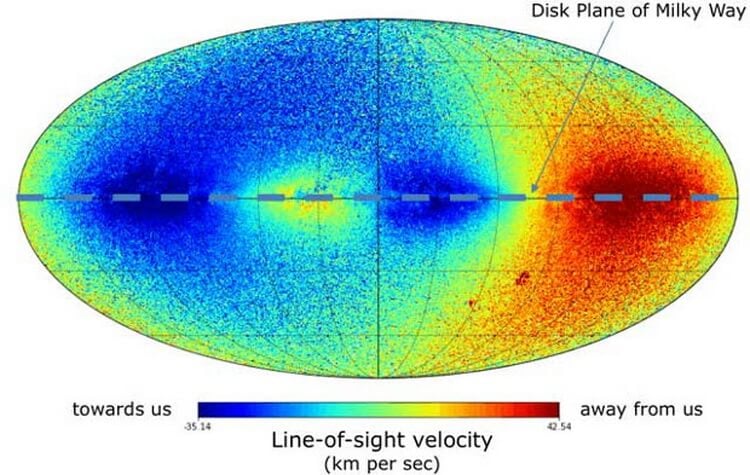- Get link
- X
- Other Apps

The European Space Agency (ESA) a new very accurate and highly detailed map of the Milky Way, which shows the exact location and brightness of almost 1.7 billion stars. At the moment it is the most complete star catalog, which was created thanks to the work of the space telescope Gaia.
The Gaia was created by ESA and put into orbit at the end of 2013. The instrument works in the optical range and measures the own motions of the stars (the displacement of stars on the celestial sphere, which are caused by their motion relative to the solar system), and parallax - changes in the coordinates of the star, which is associated with a change in the position of the observer due to the rotation of the Earth around the sun. The combination of these data allows you to find out the distance to the stars and understand how they are distributed in our galaxy.

360-degree panorama of the parallax of stars, as seen by Gaia
As a result of the first 14 months of observations, scientists received the first set of data, on the basis of which in 2016 a highly detailed map of our galaxy was created, taking into account the characteristics of more than 1.1 billion stars. The second set of data covers the observation period from July 2014 to May 2016 and contains 1.3 billion stars. In addition, Gaia measured the brightness and color of 1.7 billion stars, as well as changes in these characteristics for 500 million other objects. The new catalog also includes data on the temperature of about 100 million stars.

Map of radial velocities of stars. Red shows the objects moving away from the Sun, and blue - approaching to it
Approximately 7 million stars measured the radial velocities, which made it possible to know which trajectories they are moving relative to the center of the Milky Way. This information is necessary in order to know the weight of our galaxy, as well as the distribution (and possibly the properties) of dark matter, which, according to scientists, together with the dark energy is up to 95 percent of the mass of our universe.

Objects of the Gaia study. From left to right: objects of the solar system, neighboring stars, the Milky Way and its bridge, galactic halo and globular clusters, neighboring galaxies, distant quasars
The researchers noticed that in the motion of stars that rotate at approximately the same speed, there are some features. In future works, scientists are going to check whether they are related to the perturbations that create a jumper in the center of the Milky Way, which is a dense region of stars and interstellar gas, or it is somehow connected with the past mergers of the Milky Way with other, smaller galaxies.
The Gaia telescope also determined the orbits of 75 globular clusters and 12 dwarf galaxies that rotate around the Milky Way. The work of the telescope and the data obtained make it possible to study the past of our galaxy and its environs. For example, the distribution of dark matter or the gravitational influence of other objects. In addition, the new release of data contains the position of 14 099 known objects of the solar system, mostly asteroids.
The article is based on materials .
- Get link
- X
- Other Apps
Comments
Post a Comment